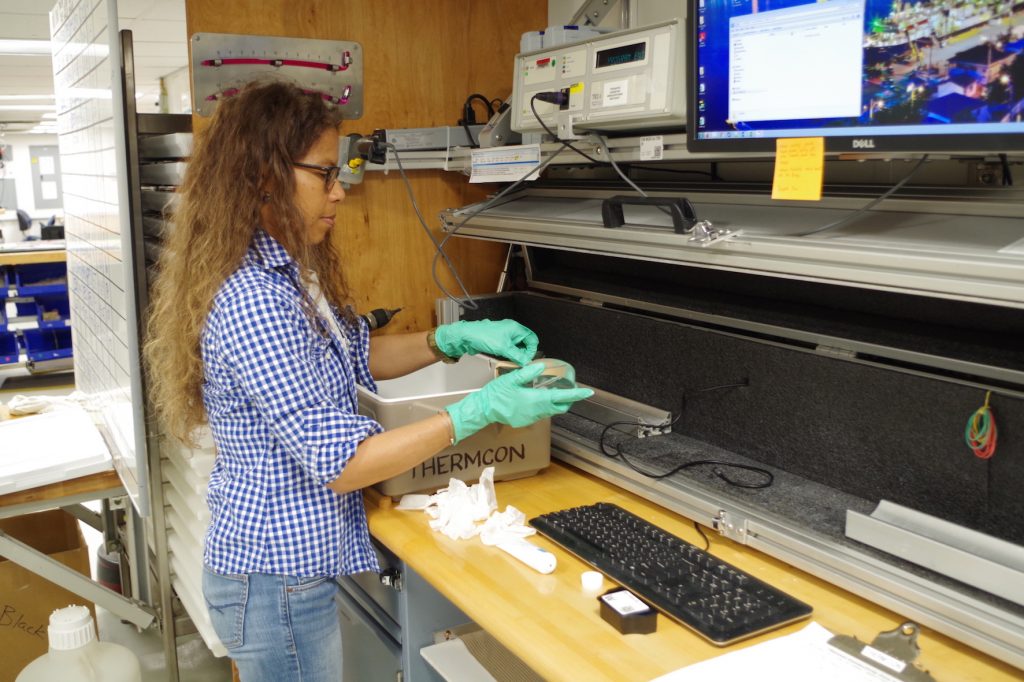
Thermal Conductivity – Mon, May 15
One of the rock properties we measure in the “Physical Properties” group, is thermal conductivity. This is a measure of how well the sediments or rock conduct heat and is used to determine the heat flow, an estimate of heat transfer out of the cooling rock layers. I carry out the measurement in different ways depending on whether it is sediment or rock. First of measuring thermal conductivity is non-destructive, as are most of the measurements done in my group. An example of a partially destructive measurement is the Z-axis measurement of P-wave velocity, or the moisture and density measurements.
Here I am measuring the thermal conductivity of a hard rock sample. This requires selecting a uniform or even surface from the split cores (cores that have been split down the centerline). See second pic for a view of the Core Splitting room where a sediment core was just split by our technicians. The hard rock samples first have to be saturated in seawater for 4 hours. For the saturation step, I use the lo-tech brown Coleman cooler with the label “Thermcon”. For the hard rock samples I use a puck with the heating needle and thermistorattached to the base. I then firmly secure the puck with the needle side in full contact with the rock using a paste and some thick rubberbands to maintain stable contact. I place the entire setup back into the seawater bath, with seawater covering the base of the puck and the rock. Finally, I set up the heating power and other parameters for the measurement including the information on the core sample in the computer on the right and voila! After about 30 minutes, we have three measurements of thermal conductivity.
On my list: “Mr. Universe” – Mos Def
